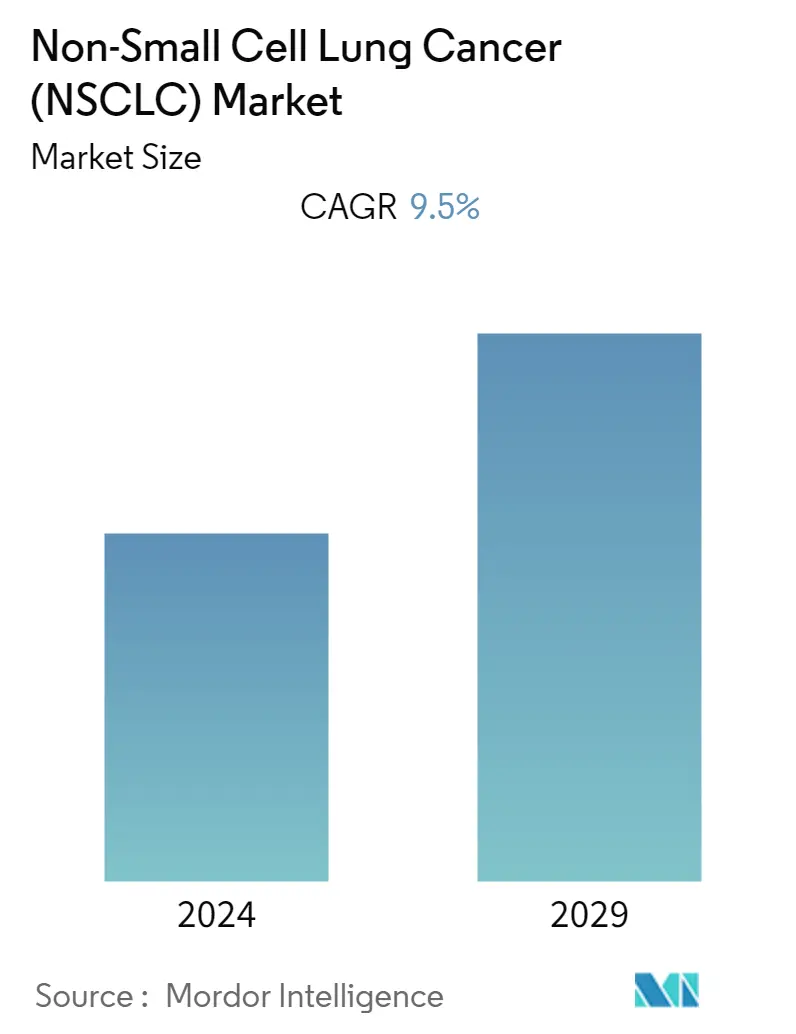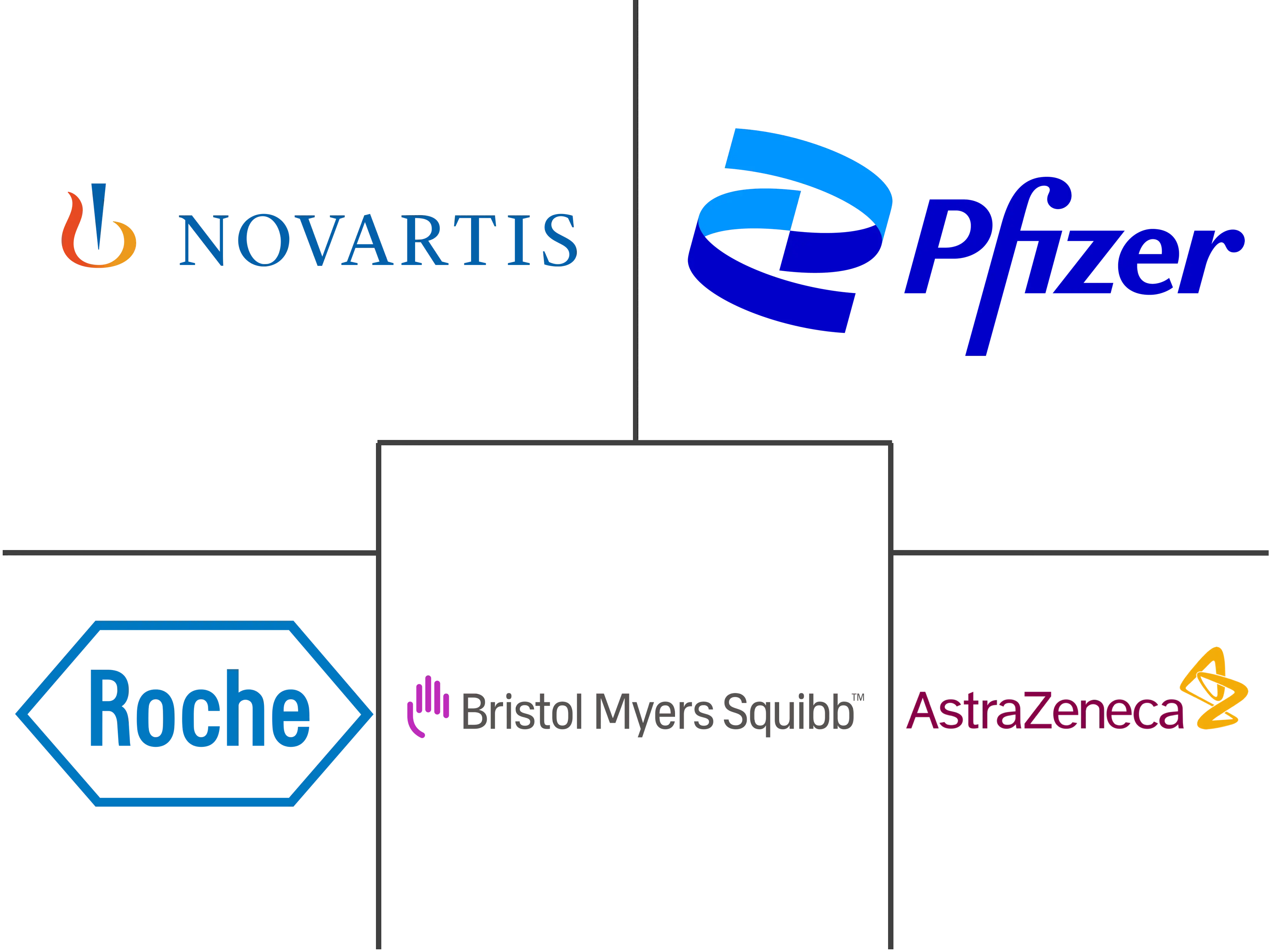Market Size of Non-Small Cell Lung Cancer (NSCLC) Industry

| Study Period | 2019 - 2029 |
| Base Year For Estimation | 2023 |
| Forecast Data Period | 2024 - 2029 |
| CAGR | 9.50 % |
| Fastest Growing Market | Asia-Pacific |
| Largest Market | North America |
Major Players
*Disclaimer: Major Players sorted in no particular order |
Need a report that reflects how COVID-19 has impacted this market and its growth?
Non-Small Cell Lung Cancer (NSCLC) Market Analysis
The non-small cell lung cancer (NSCLC) market is expected to register a CAGR of 9.5% during the forecast period.
COVID-19 has significantly affected the growth of the non-small cell lung cancer market. For instance, as per clinicaltrials.gov, as of July 2021, more than 200 interventional studies were halted during the pandemic. This has slowed down the market growth during the pandemic. However, with the released restrictions and resumed services, the company has increased its focus on conducting clinical trials for the treatment of non-small cell lung cancer. For instance, in October 2022, Daiichi Sankyo, Inc. in partnership with AstraZeneca is conducting a Phase II clinical trial to evaluate the safety and efficacy of trastuzumab deruxtecan in HER2-mutated metastatic non-small cell lung cancer (NSCLC). Thus, with such activities, the studied market is expected to grow over the forecast period.
The growing number of patients suffering from non-small cell lung cancer and the increasing number of people with unhealthy habits such as smoking, tobacco and alcohol consumption, high dose of supplements, and sedentary lifestyle across the world are driving the market growth. For instance, according to the news published in December 2022, globally about 2.20 million new cases are among 11.4% of total thoracic tumor cases and this number is projected to double by 2025. Also, as per the data published by National Cancer Registry Programme (ICMR-NCRP), in December 2022, the number of lung cancer cases increased from 98,278 in 2020 to 1,03,371 in 2022, representing an increase of 5%. Thus, the high burden of lung cancer among the population has increased the demand for effective treatment options, which in turn is anticipated to fuel market growth.
Furthermore, the increasing company's focus on conducting R&D of effective drugs for the treatment of NSCLC and the increasing product approvals and various therapy designations are contributing to the market growth. For instance, in October 2022, GSK plc reported positive results from PERLA, the phase II trial of Jemperli (dostarlimab) plus chemotherapy in patients with metastatic non-squamous non-small cell lung cancer. Also, in June 2022, the European Commission approved Novartis's Tabrecta (capmatinib) as a monotherapy for the treatment of adults with advanced non-small cell lung cancer (NSCLC) who require systemic therapy following before treatment with immunotherapy and/or platinum-based chemotherapy. Similarly, in February 2022, the Medicines and Healthcare Products Regulatory Agency (MHRA) approved Genentech's Tecentriq to treat early-stage non-small cell lung cancer.
Moreover, the increasing investment by companies in developing effective therapies for treating patients with lung cancer is also expected to fuel market growth. For instance, in January 2023, DeuterOncology, a clinical-stage drug development company, closed EUR 5.65 million (USD 6.1 million) Series A financing round. This funding enables the company to initiate the phase I clinical study for its lead product DO-2, an improved MET kinase inhibitor that is being developed as a potential best-in-class targeted therapy for lung cancer. MET inhibitors have recently been approved for patients with Non-Small Cell Lung Cancer (NSCLC) harbouring the MET exon 14 skipping mutant.
Therefore, owing to the factors such as the high burden of non-small cell lung cancer, growing R&D activities, and product approvals, the studied market is anticipated to grow over the forecast period. However, the high cost of therapy or drugs and low diagnosis rate in developing countries is likely to impede the growth of non-small cell lung cancer over the forecast period.
